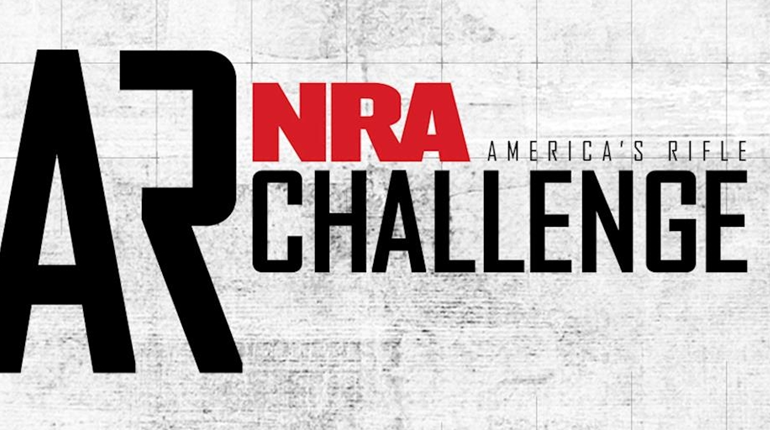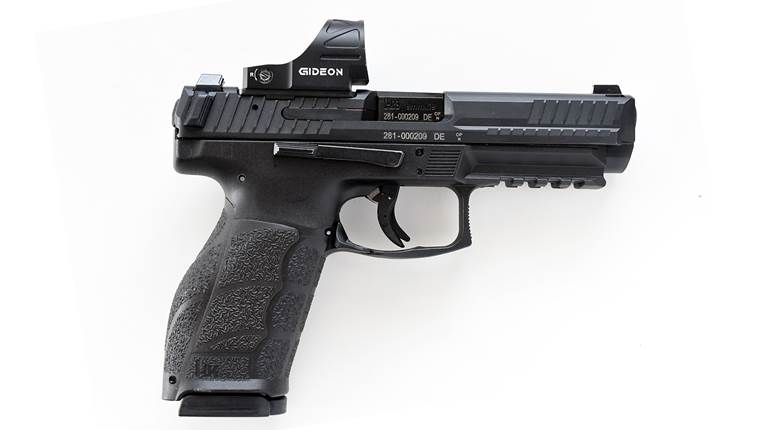
This feature article, "H&K's XM8: The Army's New Rifle?," appeared originally in the June 2005 issue of American Rifleman. To subscribe to the magazine, visit the NRA membership page and select American Rifleman as your member magazine.
Evolution
Eugene Stoner developed a gas-operated rifle in 1955 at Armalite. The first versions, known as the AR-15, entered the U.S. Army and Air Force in 1962, just in time for the Vietnam War. From the beginning, the M16 was afflicted with problems. Over the years, the M16 underwent numerous modifications and improvements, which, nonetheless, never could fully solve the basic shortfalls of the system. Currently, the most modern variant, the M4 carbine, is the fourth generation of Stoner’s design. However, some regard even it as still too dirt-sensitive and too plagued by jamming, which, among other things, is due to the magazine design. Further, the M4 carbine is thought by some too unstable for the many attachments which the G.I.s and Special Forces like to fit to their arms.
The original research and development project for the next generation of the U.S. infantry arms, called the Objective Individual Combat Weapon (OICW), visualized a new type of combination arm, which coupled a selective-fire (meaning both full-automatic and semi-automatic operation) assault weapon with a semi-automatic, laser- and computer-aimed, 20x28 mm grenade launcher. Heckler & Koch and Alliant Techsystems, the partners in the multi-million dollar project, finished a pre-production model, the XM29, in 1999, which then underwent troop testing. The “XM” designates an experimental model. Even the most modern materials could not circumvent physics: With about 17.6 lbs. combat weight, the double-barreled arm was just too heavy and unwieldy. Technologically, the developers met a hurdle, which—at that time—the state of the art of computer, battery and material technology and science had not yet overcome.
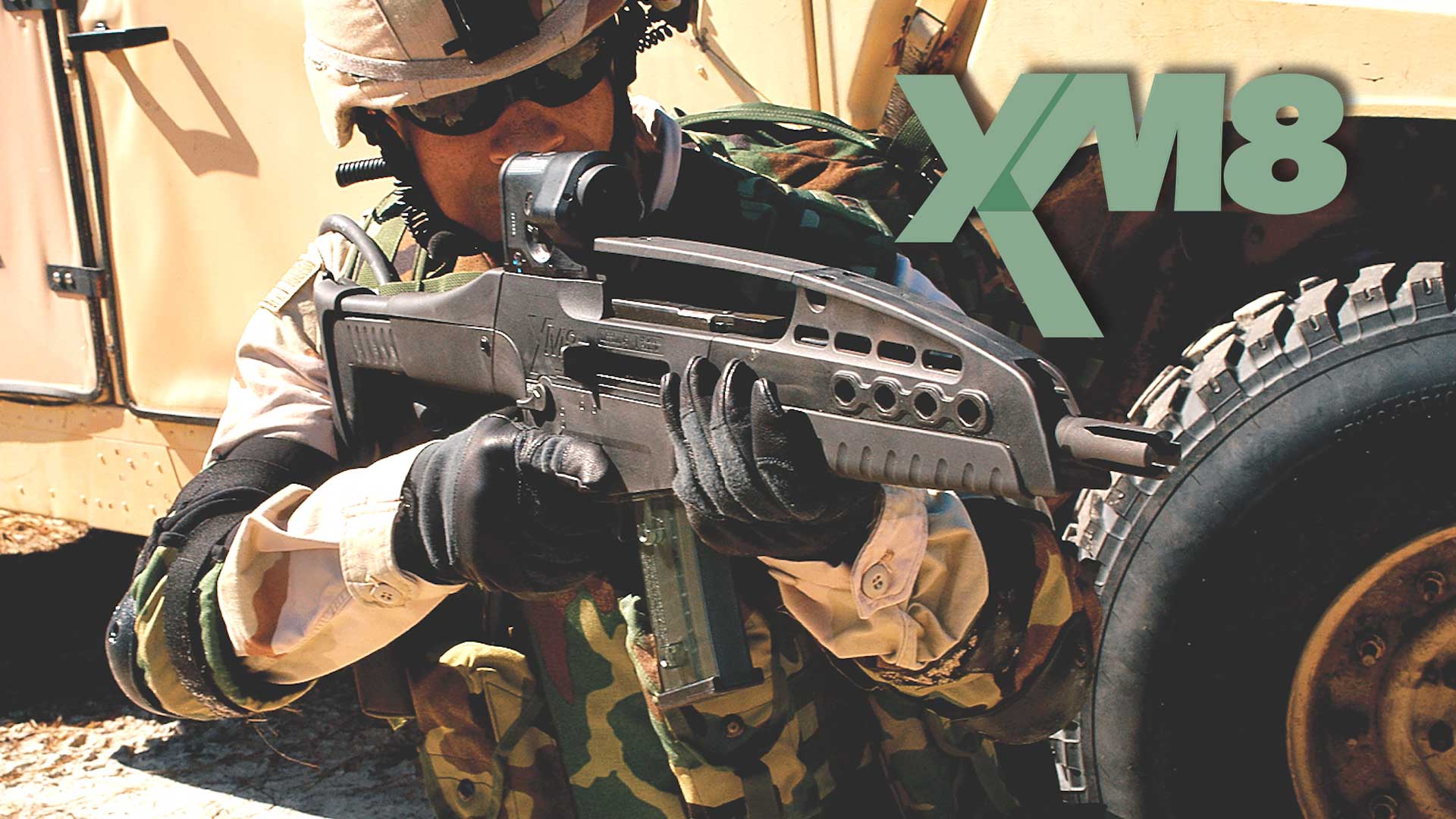
Transformation and Progress
New Jersey’s Picatinny Arsenal, the home of the Armament Research, Development & Engineering Center (ARDEC), serves as the center of all these new developments. The development and procurement office is monitored by a new hierarchy, called “Team Soldier,” first created in June 2002 at Fort Belvoir, Va. This is only a part of the comprehensive and radical new reorganization in defense policy with which the Bush administration will transform the U.S. Armed Forces for the demands of the 21st century. In the framework of the new outcome- and practice-oriented management, the “Project Manager Soldier Weapons” is responsible for the product category of team and individual arms.
As an interim replacement for the OICW, consideration was given to parting the two systems again. The grenade launcher of the XM29, enlarged to 25 mm, was to be now further developed as a stand-alone system. Similarly, the 5.56x45 mm KE (kinetic energy) component became the basis of a new assault rifle. In the summer of 2002, H&K had prepared some proposals for the new development of the M16/M4, as well as ideas for the further development of the KE component. At that date, the shortcomings of U.S. arms during the Afghan campaign had already been analyzed. Everyone in the U.S. Defense establishment also realized that a new wind was blowing in the Pentagon. Fast results were demanded—not long, drawn-out studies, selection procedures and commissions. Thus, Alliant Techsystems (ATK) and H&K openly competed against other small-arms manufacturers and won the competition. Officially, the two partners received the $5 million development contract in October 2002; however, the decision had already been made a month earlier. The time frame for the project is short because the U.S. Army desired production of the new arms for the second half of fiscal year 2005.
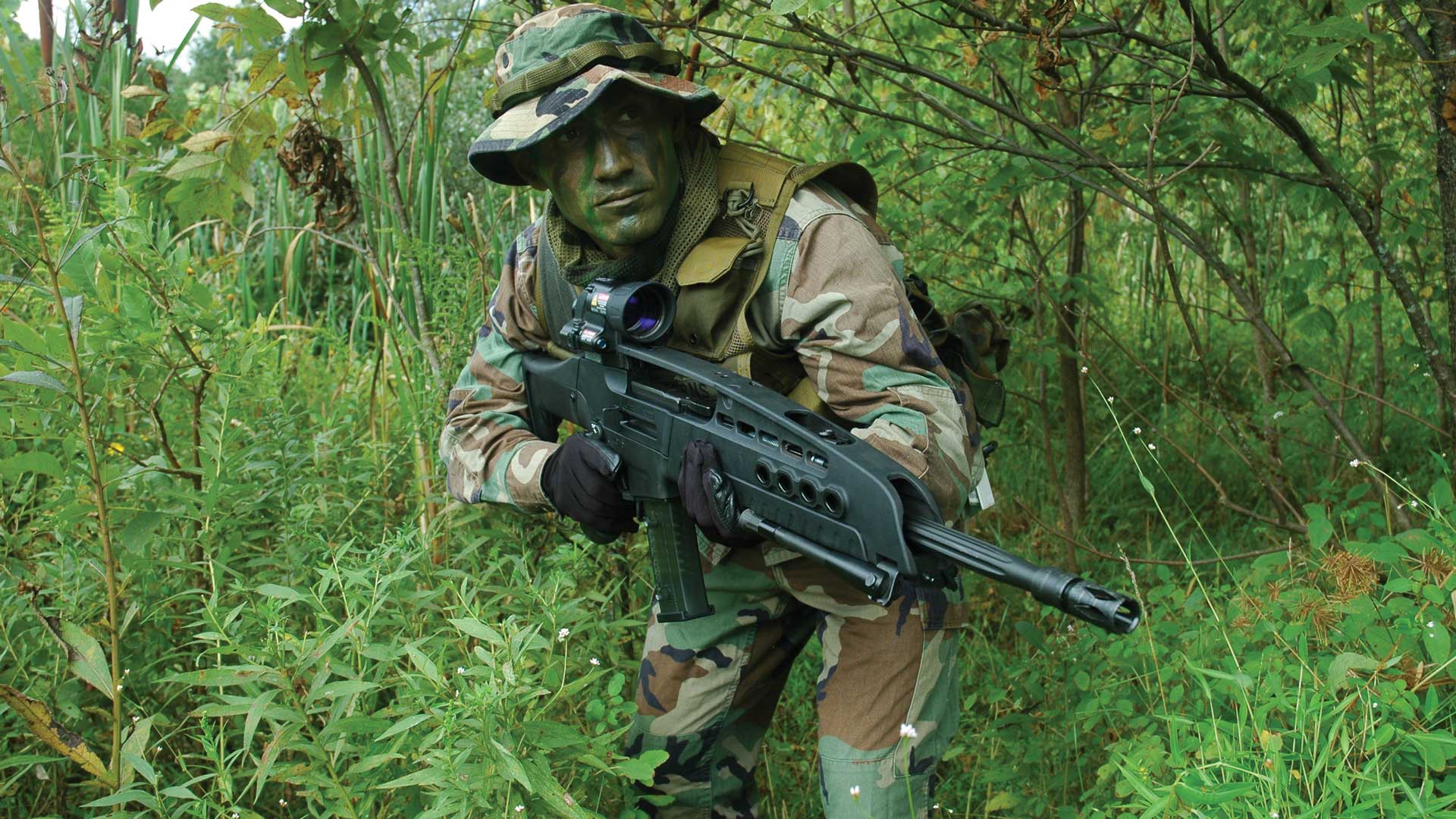
End of the Sacred Cows
Naturally, the Army had a long wish list for the new weapon system: It should exist in different variations for the fire team, from a close-combat weapon to a light machine gun and a telescopic-sighted gun. A modular building block principal was desired, which could, depending upon the requirements of each combat operation and each operational environment, be rebuilt for 5.56x45 mm, 7.62x39 mm or 5.45x39 mm ammunition and also for the new 6.8 mm Special Purpose Cartridge (SPC).
On the other hand, the military procurers were surprisingly ready to abandon the until-now inviolable guidelines. The cumbersome front profile of the M4 carbine—with its angular Picatinny rails, flashlight and its infrared unit at the end of the barrel—were now relegated to the past. Even the currently universal Picatinny rails could be abandoned. The H&K designers developed a futuristic looking, streamlined profile that satisfied all the requirements of the Army project manager. The body and the retractable stock are composed of synthetic materials that can be strengthened with glass or carbon fiber and are colored in black or a reed-like mud tone.
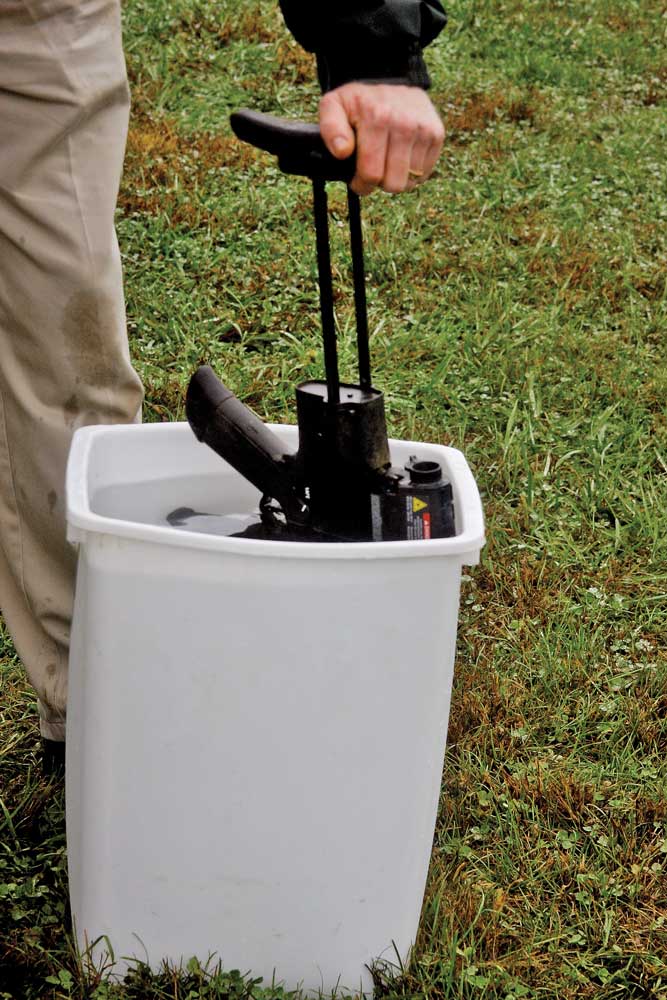
Soft, rubber-like polyurethane pieces were molded on the fore-end and also on the shoulder stock, where the shooter has tight body contact. This rifle was developed from the inside out, in a record-breaking time frame for shoot-and-test-ready prototypes in the summer of 2003.
The functions of the Picatinny rails are now taken over by recessed Picatinny Attachment Points (PCAP), which engage a form of prism-shaped swing bolt. This patent-pending connection system centers itself, and it can be located at the three, six and nine o’clock positions on the fore-end, and also under the optical sight pedestal behind the carry handle. Once installed and zeroed, the accessory will hold its alignment, even if dismounted. The IR aiming pointer and IR illuminator form one integral unit with the scope.
The centerpiece of the XM8—the breech and the gas tappet rod—may appear familiar to anyone who has handled H&K’s G36 or SL-8. The rotating bolt resembles Stoner’s design, however, it comes only with six locking lugs instead of the seven of the AR-15/ M16. Because the tappet rod is of a solid, closed design, the system requires less cleaning than the direct impingement AR-15/ M16, where the gas, including powder residue, is drawn off the barrel and routed back to the breech.
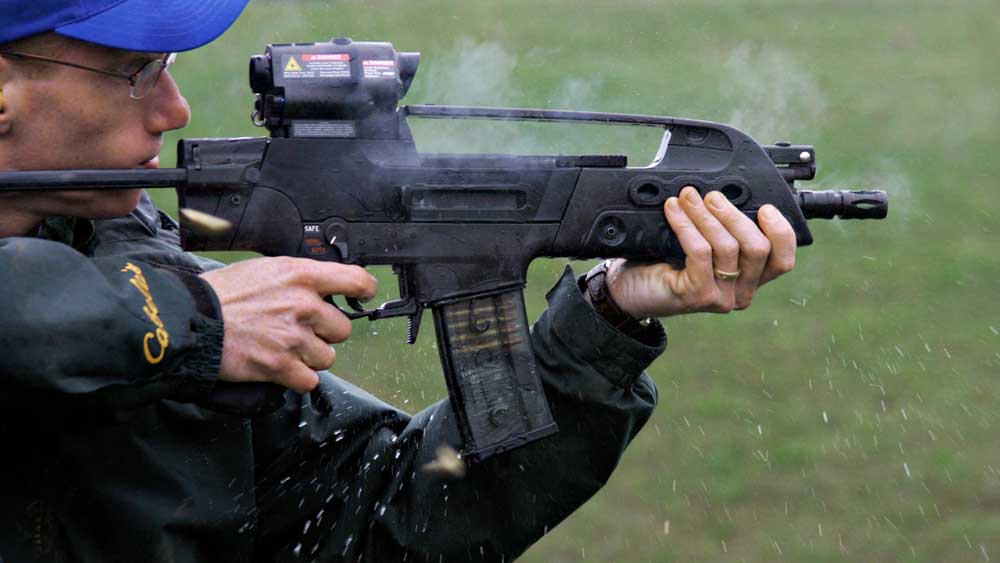
The functional reliability of this self-loading system surprised the Americans when they traveled to Oberndorf in October 2003 for the first shooting test of the prototypes: One of the rifles fired over 15,000 consecutive shots without cleaning and without jamming, which Col. Michael Smith, managing officer of the Project Manager Soldier Weapons, judged as “truly remarkable.” In the U.S. Armed Forces magazine, Rich Audette, acting project manager, recalled the demonstration in Oberndorf: “I was involved in the development of the M16A2 and the M4, and I have never seen something come directly out of the box that shot so well as this firearm!”
In October 2003, the first 30 were sent to Aberdeen, Md., for additional tests at the Army Proving Grounds. One-hundred-seventy additional firearms arrived in mid-December from Oberndorf for U.S. troop tests.
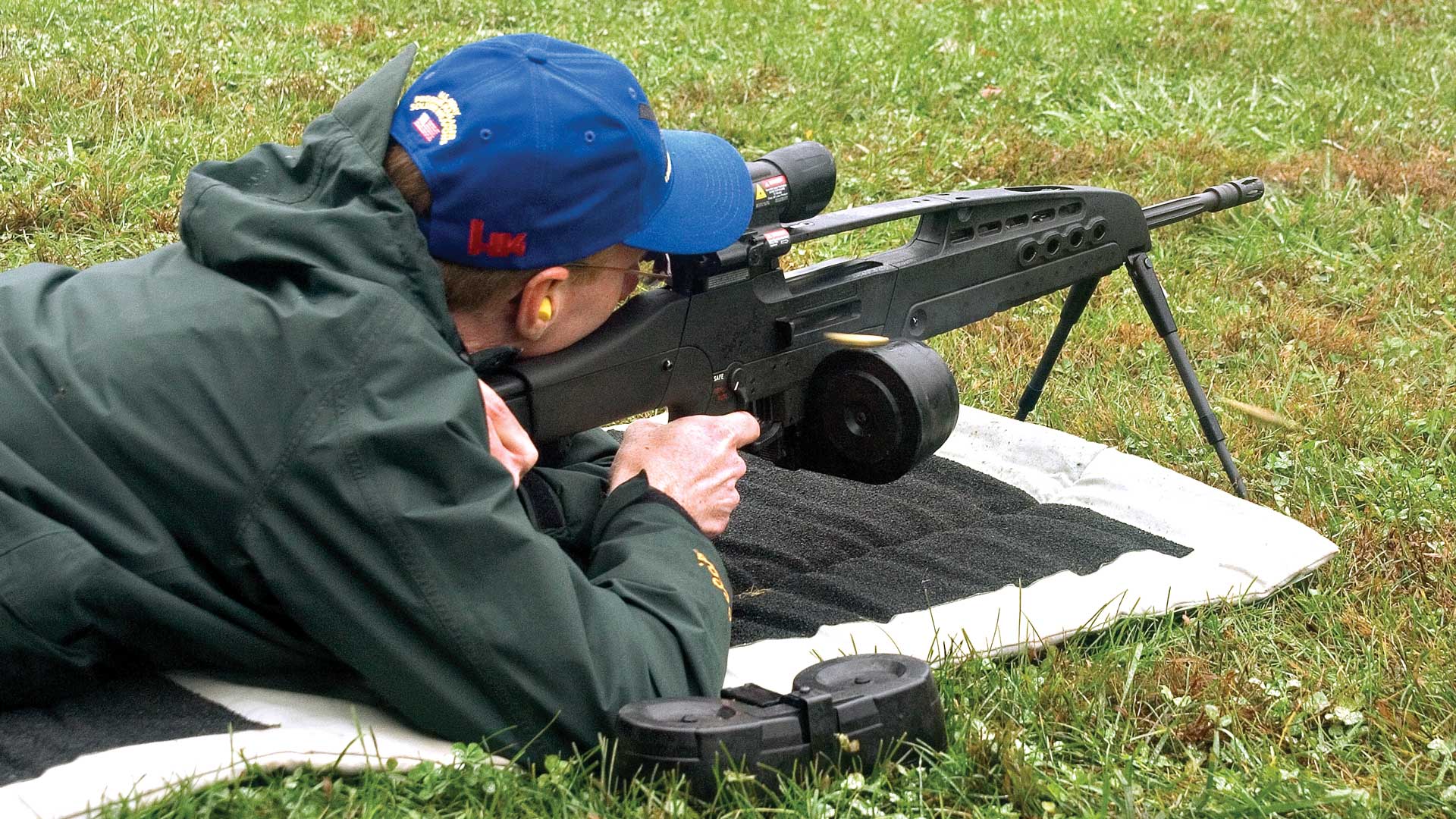
Variants
This modular family was first built and tested in the 5.56x45 mm, but it can also easily be adapted for the new Remington 6.8x43 mm SPC. The XM8’s standard configuration is the carbine version, with a 121⁄2" barrel, and, with fully extended stock, a total length of 33.3". Currently, the firearm’s unloaded weight is 7.5 lbs., although it is set to undergo a weight-reduction program.
A longer version with a 20" barrel and an optional bipod is envisioned as a scoped rifle for designated marksmen or snipers. The same arm would also function as a type of light machine gun for fire support, when equipped with the H&K bipod and 100-round drum magazine. At the demonstration, H&K testers shot four such magazines continuously in short bursts within a five-minute period without any problems. The design surpasses the military’s goal of more than 210 rounds of continuous fire without a cookoff.
Lastly, there is a short variant, with a telescopic, rail-type stock called the Special Compact that serves as a close Personal Defense Weapon (PDW) for vehicle crewmen or helicopter pilots. Even though this compact arm has only a 9" barrel, it still produces a muzzle velocity of 2425 f.p.s.

6.8x43 mm SPC: Fatter Is More Chic
It is not a state secret that elements of the U.S. Armed Forces are not very satisfied with the terminal ballistic capabilities of the 5.56x45 mm. Particularly from the Special Forces comes the demand for a more powerful, man-stopping cartridge to which existing 5.56 mm arms can be adapted without great additional work and expense. Operators from the Fifth Special Forces Group got together with Chris Murray and Remington, and created, over the course of two years, through various practice tests (in which the SWAT teams of several large U.S. police agencies participated) the 6.8 mm Special Purpose Cartridge, which Remington announced in early 2004.
The cartridge has been introduced to the civilian market with, among others, the 115-gr. Sierra MatchKing boattail hollow-points and polymer-tip bullets. With a 161⁄2"-long barrel (similar to the M4 carbine) the bullet has an a initial velocity of 2650 to 2690 f.p.s. The energy would exceed that of the current .223 Rem. military cartridge, the 62-gr. M855, by more than 50 percent at the muzzle, and, at 492 yds., by 80 percent. The new cartridge should exhibit similar trajectory and accuracy to the .223 Rem.
The .30 Remington case, which is slightly thicker than the 5.56 case, but is exactly cylindrical, serves as the basis for the new cartridge. The bullet size was determined incrementally. The 6 and 6.5 mm were tried, and there was also a 7 mm test series, but the trajectory was not flat enough. The 6.8 mm (.270) variation finally proved to be the best compromise and achieved the required performance.
The American military seems now again to be nearly where John Garand was in the 1920s at Springfield Armory, when he designed his rifle in .276 caliber with a 125-gr. bullet. The British also tried, after 1945, a .280 that exhibited similar ballistic capabilities.












